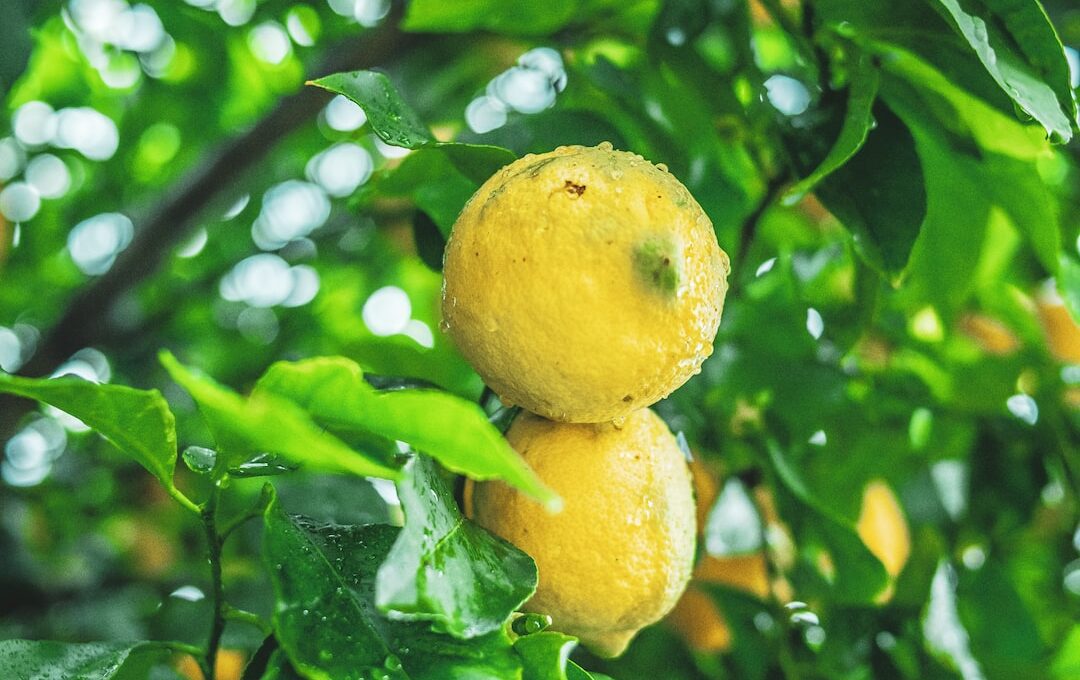Are you a proud owner of a lemon tree plant? If so, you’re probably wondering how often you should water it to keep it healthy and thriving. Well, you’ve come to the right place!
In this article, we will guide you on the proper watering techniques for lemon trees, taking into consideration the climate and seasonal factors. Whether you have a young lemon tree or an established one, we will provide you with the right watering frequency to ensure its optimal growth.
Additionally, we will teach you how to recognize the signs of overwatering or underwatering, so you can avoid any potential harm to your precious lemon tree.
So, grab your watering can and let’s get started on the journey to maintaining a happy and hydrated lemon tree plant!
Quick Summary
- Lemon trees require regular watering, especially during hot and dry summer months.
- Watering deeply and infrequently promotes deep root growth and prevents waterlogging.
- Adjust your watering routine based on the guidelines provided in the table for different climates.
- Proper watering techniques ensure the overall well-being and productivity of your lemon tree.
Understand the Watering Needs of Lemon Trees
Understanding the watering needs of lemon trees is crucial to ensure their health and productivity. As a lemon tree owner, it’s important to be aware of the watering requirements to keep your tree happy and thriving.
Lemon trees generally require regular watering, especially during the hot and dry summer months. Providing the right amount of water at the right time is essential for their growth.
When it comes to watering your lemon tree, it’s best to follow a consistent schedule. Watering deeply and infrequently is the key to promote deep root growth and prevent waterlogging. For young lemon trees, water them every 5-7 days, allowing the water to soak at least 12 inches into the soil. Mature lemon trees, on the other hand, require watering every 7-10 days, ensuring the water reaches a depth of 18-24 inches.
In terms of the best time to water your lemon tree, it’s recommended to do so early in the morning or late in the afternoon. This allows the water to penetrate the roots effectively before the heat of the day evaporates it. Watering during these cooler times also reduces the risk of fungal diseases, as the foliage has a chance to dry before nightfall.
By understanding the watering requirements and timing for your lemon tree, you can ensure its health and productivity for years to come. Remember to water deeply and infrequently, and choose the best time of day to water for optimal results.
Consider the Climate and Seasonal Factors
Consider the local weather patterns and time of year when deciding how frequently to hydrate your lemon tree. Watering during drought is crucial to ensure your lemon tree stays healthy and hydrated. In dry climates or during extended periods of little rainfall, you may need to water your lemon tree more frequently. Keep an eye on the soil moisture levels and water your tree when the top inch of soil feels dry. Adjusting watering for indoor lemon trees is also important. Indoor environments tend to have lower humidity levels, so you may need to water your indoor lemon tree more often compared to outdoor ones. However, be cautious not to overwater as it can lead to root rot. To help you understand the watering needs of your lemon tree better, here is a table that outlines recommended watering frequencies based on different climate and seasonal factors:
| Climate | Spring | Summer | Fall | Winter |
|---|---|---|---|---|
| Arid | Every 7-10 days | Every 5-7 days | Every 7-10 days | Every 10-14 days |
| Humid | Every 10-14 days | Every 7-10 days | Every 10-14 days | Every 14-21 days |
| Indoor | Every 5-7 days | Every 3-5 days | Every 5-7 days | Every 7-10 days |
By following these guidelines and adjusting your watering routine accordingly, you can ensure your lemon tree receives the proper hydration it needs to thrive, regardless of the climate or season.
Watering Frequency for Young Lemon Trees
Taking into account the climate and seasonal factors, it’s essential to adjust the watering frequency for young lemon trees to ensure their healthy growth.
When it comes to watering young lemon trees, it’s important to establish a consistent watering schedule. Young lemon trees require frequent watering during their first year of growth to help them establish strong roots. During hot and dry periods, it’s crucial to increase the frequency of watering to prevent the soil from drying out completely.
To determine when to water your young lemon tree, you can use the finger test. Simply stick your finger about an inch into the soil near the base of the tree. If the soil feels dry at that depth, it’s time to water. However, be careful not to overwater, as this can lead to root rot and other plant diseases. It’s better to water deeply and less frequently rather than shallowly and often.
When watering your young lemon tree, make sure to water the entire root zone. This means watering the soil around the tree in a wide circle, extending beyond the drip line of the branches. This will encourage the roots to spread out and establish a strong foundation.
In addition to adjusting the watering frequency, there are some other watering tips to keep in mind. Watering in the morning is preferable, as this allows the leaves to dry off during the day, reducing the risk of fungal diseases. Using a soaker hose or drip irrigation system can also help deliver water directly to the root zone and minimize water waste.
By following these watering tips and adjusting the frequency based on climate and seasonal factors, you can ensure the healthy growth of your young lemon tree.
Watering Frequency for Established Lemon Trees
Once lemon trees have taken root and firmly established themselves in their environment, their watering needs can be adjusted accordingly. It is important to maintain a regular watering schedule for established lemon trees to ensure optimal moisture levels. The frequency of watering will depend on various factors such as climate, soil type, and tree size.
As a general rule, established lemon trees should be watered deeply once every 7 to 10 days during the growing season. This allows the roots to receive a good soak and promotes healthy growth.
To determine the watering schedule for your specific lemon tree, you can use a moisture meter or perform a simple soil test. Insert the moisture meter into the soil around the tree’s root zone and check the reading. If the moisture level is below the optimal range, it’s time to water. Alternatively, you can dig a small hole near the tree and feel the soil with your fingers. If it feels dry to a depth of about 2 inches, it’s a sign that watering is needed.
Remember to water deeply and slowly, allowing the water to penetrate the soil and reach the deeper roots. Avoid overwatering, as this can lead to root rot and other problems. By following a proper watering schedule and maintaining optimal moisture levels, you can help your established lemon tree thrive and produce delicious fruits for years to come.
Signs of Overwatering or Underwatering
If your lemon tree is showing signs of overwatering or underwatering, it’s time to make adjustments to ensure its health and productivity. Common mistakes in watering can lead to these issues, but with the right knowledge, you can prevent them and keep your lemon tree thriving.
Here are some signs to look out for and tips on how to prevent root rot:
-
Wilting leaves: If your lemon tree’s leaves are drooping or wilting, it could be a sign of both overwatering and underwatering. Check the soil moisture level and adjust accordingly.
-
Yellowing leaves: Yellowing leaves that fall off easily can indicate overwatering. Make sure the soil is well-draining and not constantly saturated.
-
Fungus or mold growth: Excessive moisture can lead to the growth of fungi or mold on the soil surface or around the base of the tree. Avoid overwatering to prevent these issues.
-
Root rot: Overwatering can cause root rot, which can be identified by a foul smell, mushy roots, and brown or black discoloration. To prevent root rot, ensure proper drainage and allow the soil to dry out between waterings.
By being mindful of these signs and taking preventative measures, you can keep your lemon tree healthy and avoid the pitfalls of overwatering or underwatering.
Is the Watering Frequency for Lemon Trees Similar to Bonsai Trees?
The watering frequency for lemon trees may differ from that of bonsai trees. While lemon trees typically require regular watering to keep the soil consistently moist, watering bonsai trees frequently might harm their delicate roots. It is crucial to understand the specific needs of each tree to maintain their health and encourage proper growth.
Proper Watering Techniques for Lemon Trees
Mastering the art of properly hydrating your lemon tree is crucial for its overall well-being and productivity. To ensure the health of your lemon tree, it’s important to water it at the right time and with the right tools.
The best time to water your lemon tree is in the morning, as this allows the soil to absorb the moisture and the leaves to dry before nighttime. This helps prevent fungal diseases and promotes healthy growth.
When it comes to watering tools, a soaker hose or drip irrigation system is highly recommended. These tools deliver water directly to the roots, ensuring efficient watering and minimizing water waste. Additionally, using a watering can or hose with a nozzle that provides a gentle spray is ideal. This prevents excessive water pressure that can damage the tree or dislodge the soil around the roots.
When watering your lemon tree, make sure to water deeply, allowing the water to penetrate the root zone. Avoid shallow watering, as it encourages shallow root growth and makes the tree more susceptible to drought stress. Aim to keep the soil consistently moist but not waterlogged.
To check if your lemon tree needs watering, simply stick your finger into the soil about an inch deep. If it feels dry, it’s time to water.
By following these proper watering techniques, you can ensure the safety and well-being of your lemon tree, leading to a bountiful harvest of delicious lemons.
Using Mulch to Retain Moisture
Now that you know the proper watering techniques for your lemon tree, let’s talk about another effective method to retain moisture and keep your tree healthy: using mulch.
Mulching is a great way to conserve water and provide a protective layer around the roots of your lemon tree. By applying mulch around the base of your tree, you create a barrier that helps to prevent water evaporation from the soil. This means that you won’t have to water your tree as frequently, saving you time and effort.
Additionally, the mulch acts as insulation, keeping the soil temperature stable and protecting the roots from extreme heat or cold.
There are various materials you can use for mulching, such as wood chips, straw, or compost. These materials not only help to retain moisture but also enrich the soil as they break down over time. When choosing mulching materials, make sure to avoid any that may contain harmful chemicals or pests.
Incorporating mulch into your lemon tree care routine can have numerous benefits. It conserves water, provides insulation, and improves the overall health of your tree. So grab some mulch and give your lemon tree the safety and care it deserves.
- Wood chips: Creates a natural and rustic look while providing effective moisture retention.
- Straw: Adds a charming touch to your garden while keeping the soil moist and cool.
- Compost: Enriches the soil with essential nutrients and improves water retention.
- Leaf mulch: Recycle fallen leaves to create a protective layer that conserves moisture and prevents weed growth.
Adjusting Watering Schedule for Different Growing Stages
To ensure optimal growth and health for your lemon tree, it’s important to adjust the watering schedule based on its different growing stages. Watering techniques play a crucial role in maintaining a healthy lemon tree.
During the first year, when the tree is in its infancy, it requires frequent watering to establish strong roots. Water the tree deeply once or twice a week, making sure the soil is moist but not waterlogged.
As the tree matures and enters its second and third years, you can reduce the frequency of watering to once every 10-14 days. At this stage, the tree has developed a stronger root system and can withstand longer periods between watering. However, it’s important to keep an eye on the soil moisture and adjust irrigation accordingly.
During hot summer months, when the tree is actively growing and producing fruit, you may need to increase the frequency of watering. Monitor the soil moisture levels regularly and adjust the irrigation to keep the soil consistently moist, but avoid overwatering, as it can lead to root rot.
By adjusting your watering schedule based on the different growing stages of your lemon tree, you can ensure its optimal health and productivity.
Frequently Asked Questions
Can I use tap water to water my lemon tree, or should I use filtered or distilled water?
You can use tap water to water your lemon tree, but it’s best to use filtered or distilled water. Tap water may contain impurities that can harm the tree. Filtered or distilled water ensures the safety and health of your lemon tree.
Is it better to water my lemon tree in the morning or in the evening?
To ensure the safety of your lemon tree, it’s best to water it in the morning. Morning watering allows the soil to dry before evening, reducing the risk of fungal diseases. The ideal temperature for watering lemon trees is between 60-70 degrees Fahrenheit.
How much water should I give my lemon tree each time I water it?
To prevent overwatering, give your lemon tree a deep watering once a week. Check the soil moisture before watering. Fertilize every 6-8 weeks during the growing season. Adjust watering frequency based on weather conditions and soil moisture.
Can I use a sprinkler system to water my lemon tree, or is it better to water it manually?
It is better to water your lemon tree manually rather than using a sprinkler system. This gives you more control over the amount of water and prevents overwatering. Additionally, using filtered water benefits the health of your lemon tree.
Can I use rainwater to water my lemon tree, or should I only use tap water?
You can use rainwater or tap water to water your lemon tree. Rainwater is beneficial because it is natural and free from chemicals. However, if you have concerns about safety, using tap water is a reliable option.
Conclusion
In conclusion, it’s important to understand the watering needs of your lemon tree to ensure its health and growth. Depending on the climate and season, the watering frequency may vary.
For young lemon trees, it’s essential to water them more frequently, while established lemon trees require less frequent watering. Watch out for signs of overwatering or underwatering, and adjust your watering schedule accordingly.
By following proper watering techniques and using mulch to retain moisture, you can help your lemon tree thrive at different growing stages.









